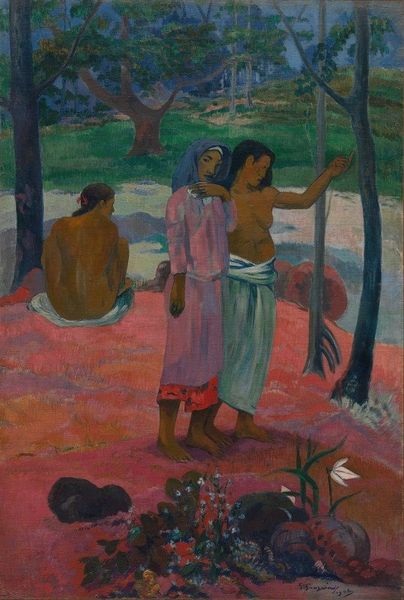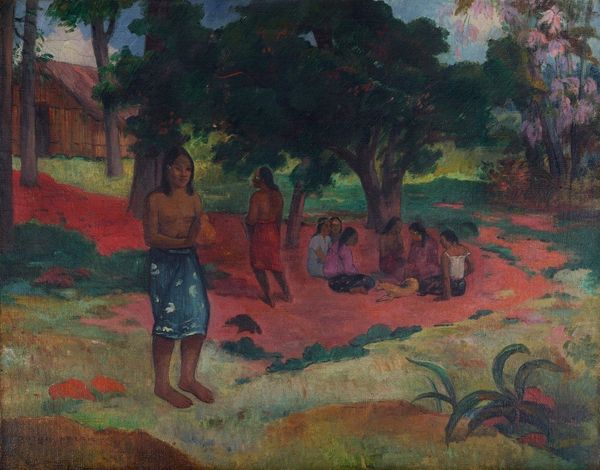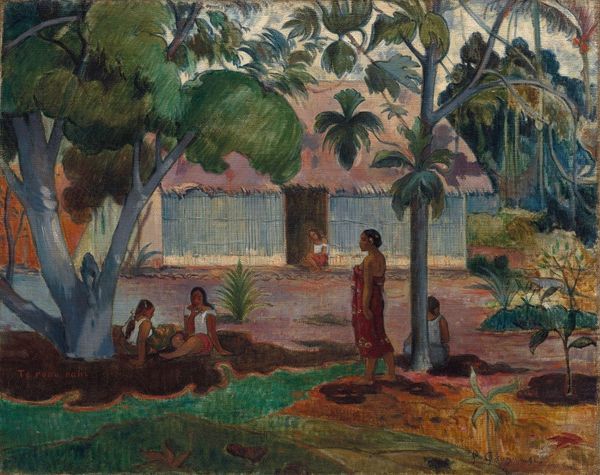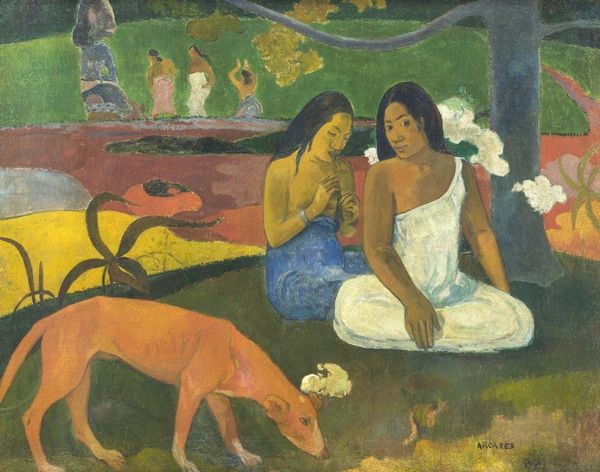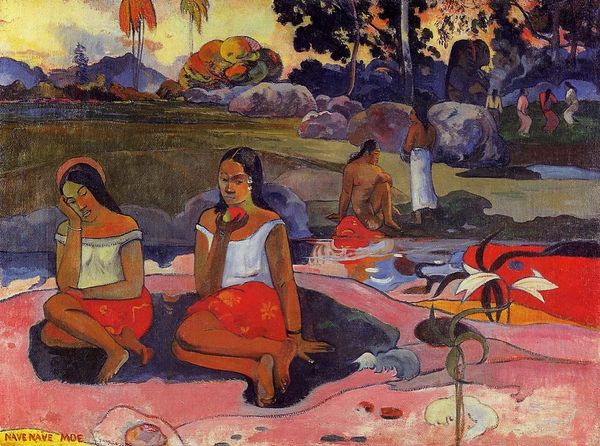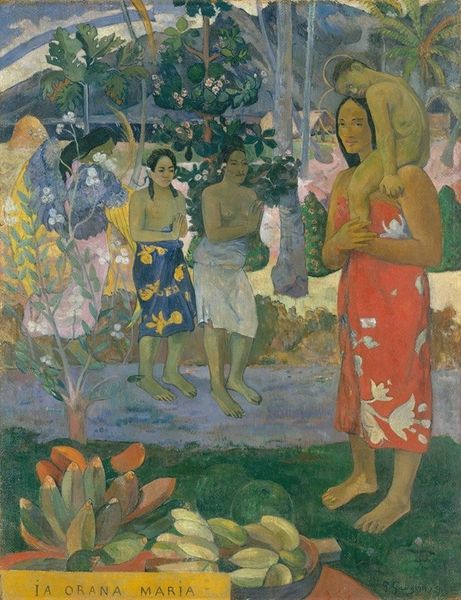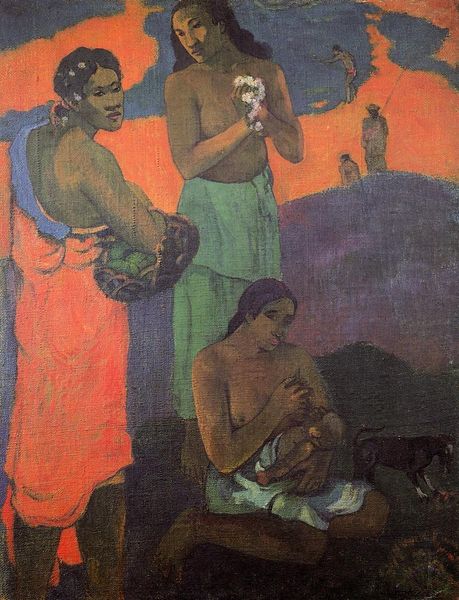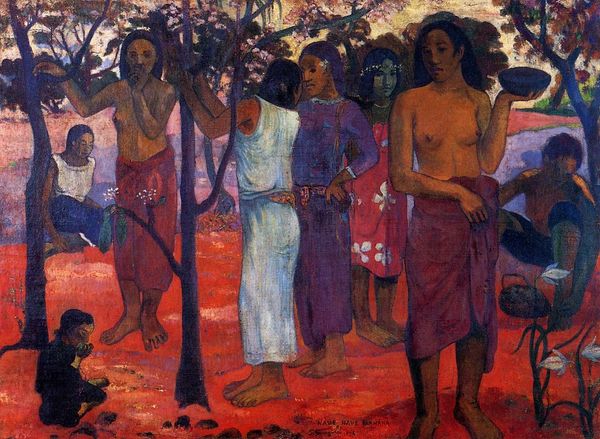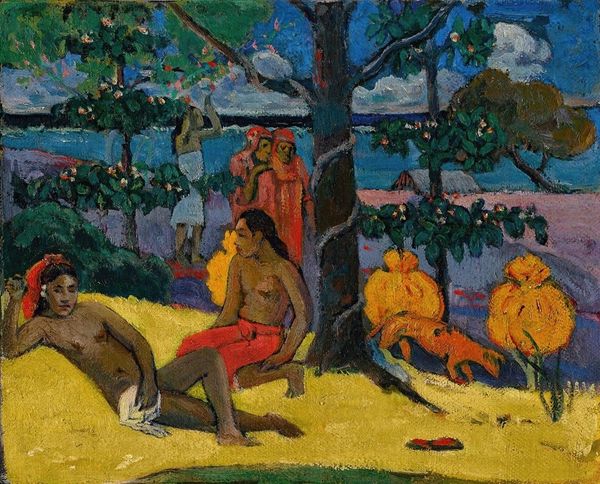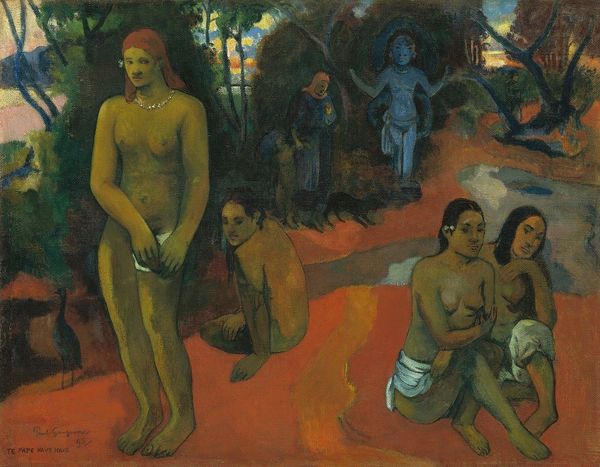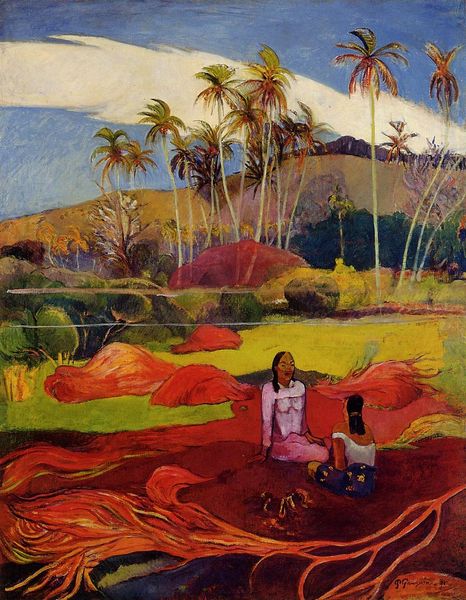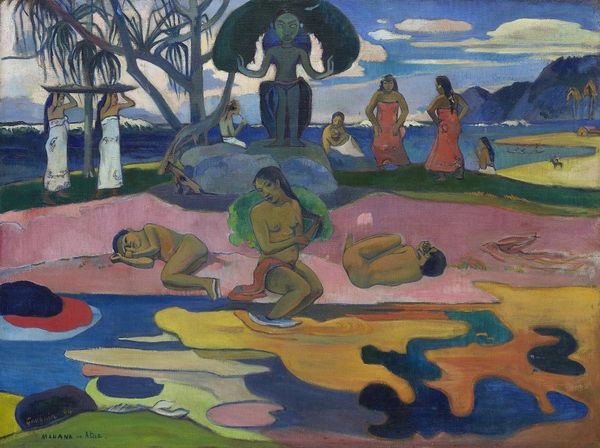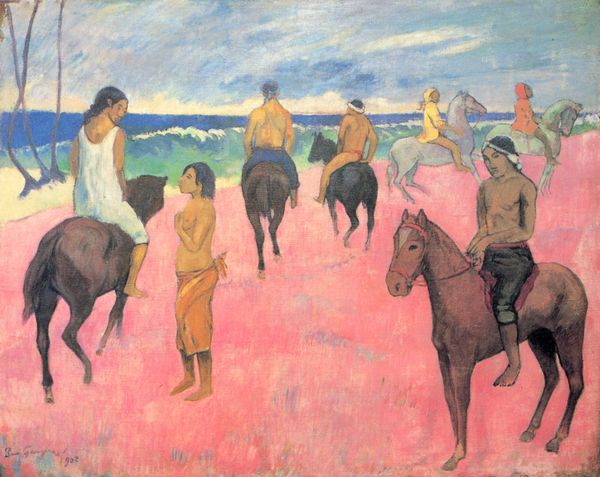
painting, oil-paint
#
painting
#
oil-paint
#
landscape
#
impressionist landscape
#
figuration
#
oil painting
#
naive art
#
painting painterly
#
symbolism
#
painting art
#
post-impressionism
Copyright: Public Domain: Artvee
Paul Gauguin created I Raro te Oviri in the 1890s using oil on canvas. Gauguin has manipulated this material to create a distinctive look. The texture is built up of expressive brushstrokes, applied with great freedom. The color palette is bold and unnatural, with flattened forms reminiscent of the kind of cheap commercial printing available at the time. Gauguin spent time in Tahiti, and the works he made there have been hotly debated ever since. He was interested in a “primitive” aesthetic, but he was also a sophisticated artist, fully aware of the art market back in Europe. In a way, this painting is a kind of ready-made, like those created by Marcel Duchamp a few decades later. Gauguin is using materials and techniques that were very much a product of his time, while pretending to offer a window onto an earlier, simpler way of life. Ultimately, what makes this painting so interesting is that the making, the materials, and the context are all so entangled. To appreciate this artwork fully, you must challenge traditional distinctions between fine art and craft.
Comments
No comments
Be the first to comment and join the conversation on the ultimate creative platform.
